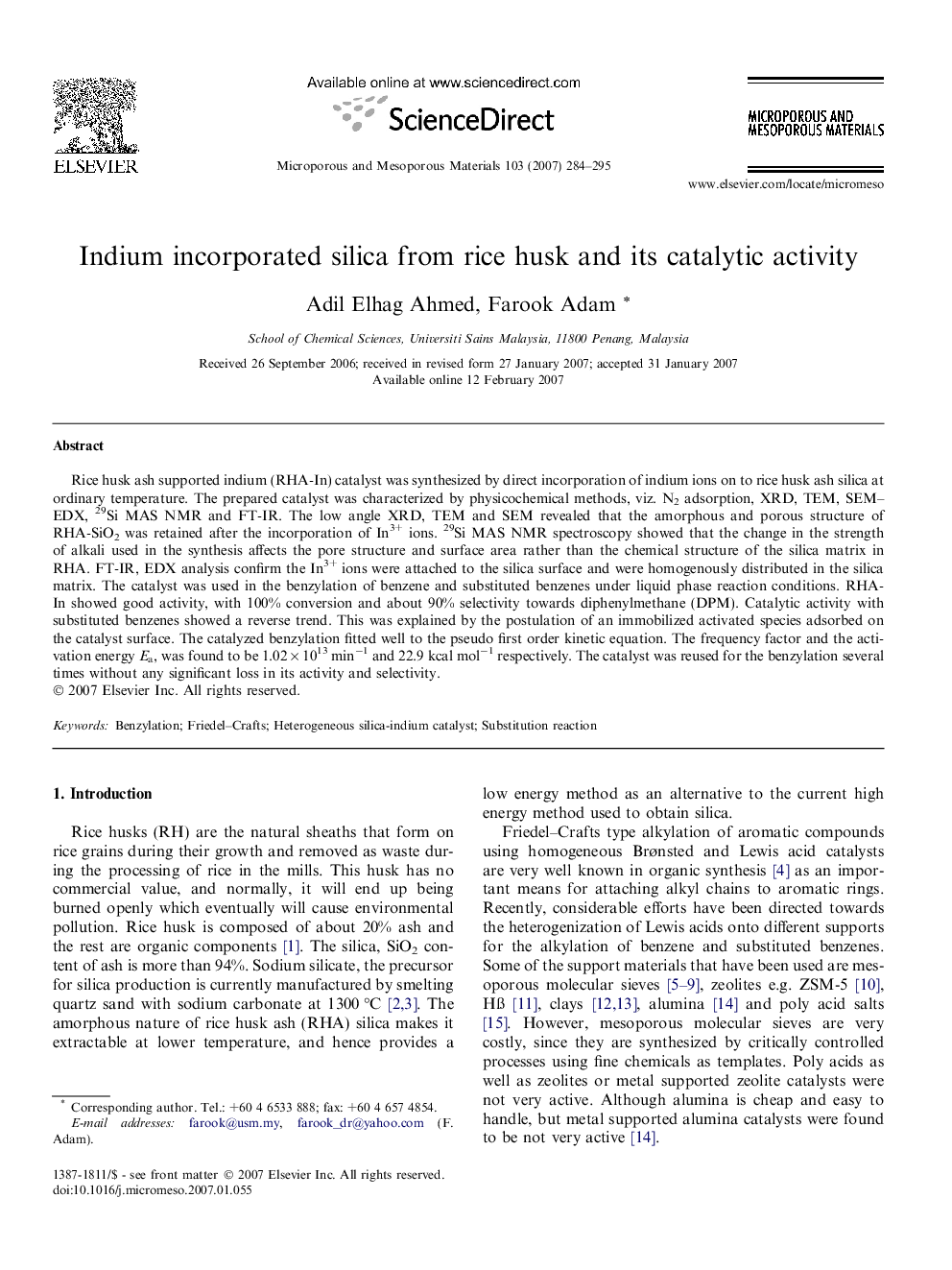| Article ID | Journal | Published Year | Pages | File Type |
|---|---|---|---|---|
| 76831 | Microporous and Mesoporous Materials | 2007 | 12 Pages |
Rice husk ash supported indium (RHA-In) catalyst was synthesized by direct incorporation of indium ions on to rice husk ash silica at ordinary temperature. The prepared catalyst was characterized by physicochemical methods, viz. N2 adsorption, XRD, TEM, SEM–EDX, 29Si MAS NMR and FT-IR. The low angle XRD, TEM and SEM revealed that the amorphous and porous structure of RHA-SiO2 was retained after the incorporation of In3+ ions. 29Si MAS NMR spectroscopy showed that the change in the strength of alkali used in the synthesis affects the pore structure and surface area rather than the chemical structure of the silica matrix in RHA. FT-IR, EDX analysis confirm the In3+ ions were attached to the silica surface and were homogenously distributed in the silica matrix. The catalyst was used in the benzylation of benzene and substituted benzenes under liquid phase reaction conditions. RHA-In showed good activity, with 100% conversion and about 90% selectivity towards diphenylmethane (DPM). Catalytic activity with substituted benzenes showed a reverse trend. This was explained by the postulation of an immobilized activated species adsorbed on the catalyst surface. The catalyzed benzylation fitted well to the pseudo first order kinetic equation. The frequency factor and the activation energy Ea, was found to be 1.02 × 1013 min−1 and 22.9 kcal mol−1 respectively. The catalyst was reused for the benzylation several times without any significant loss in its activity and selectivity.
